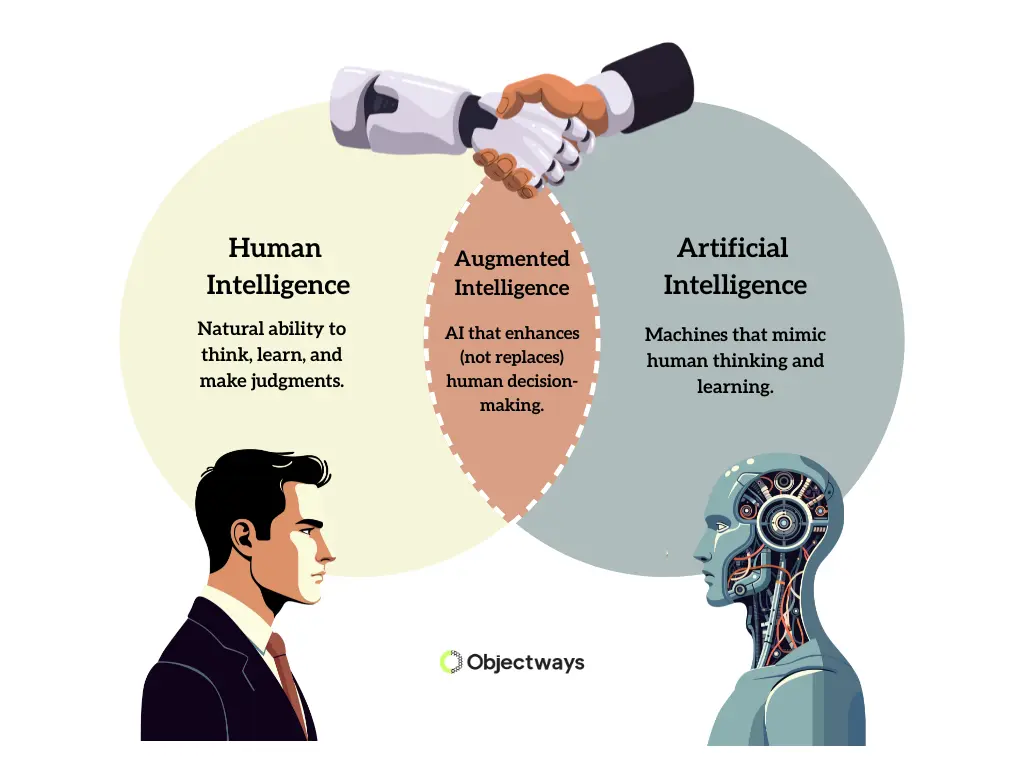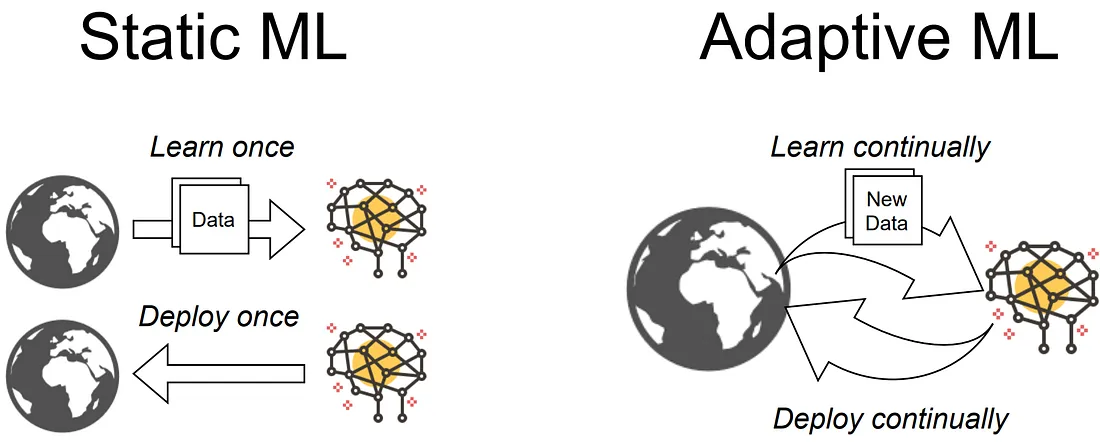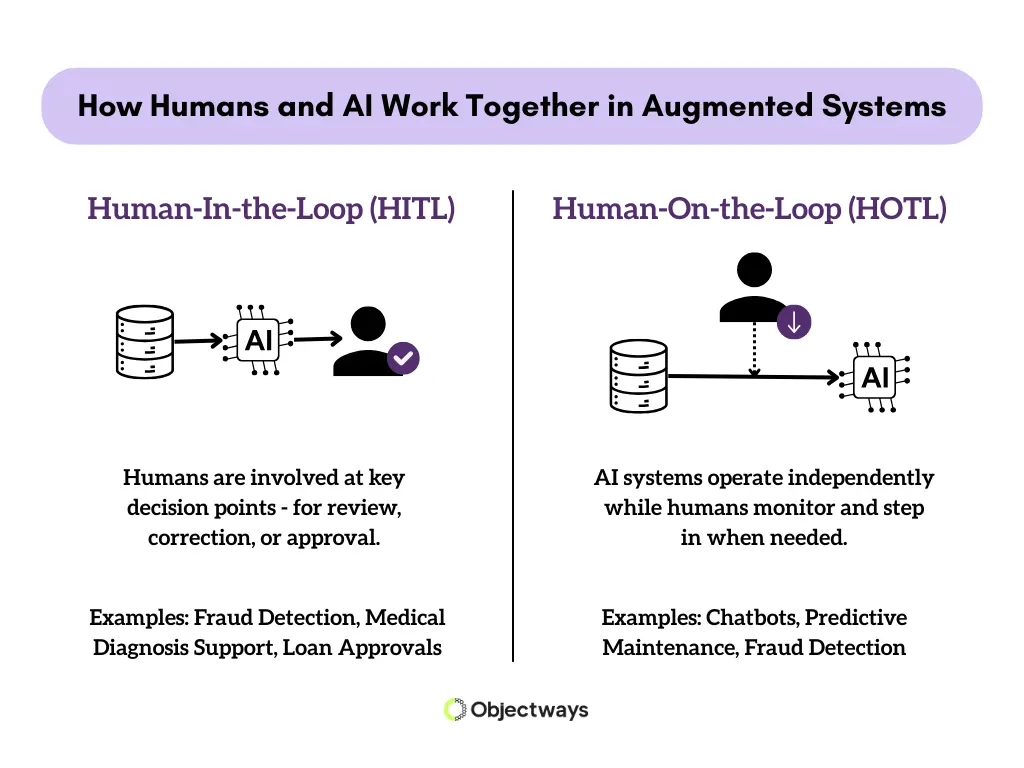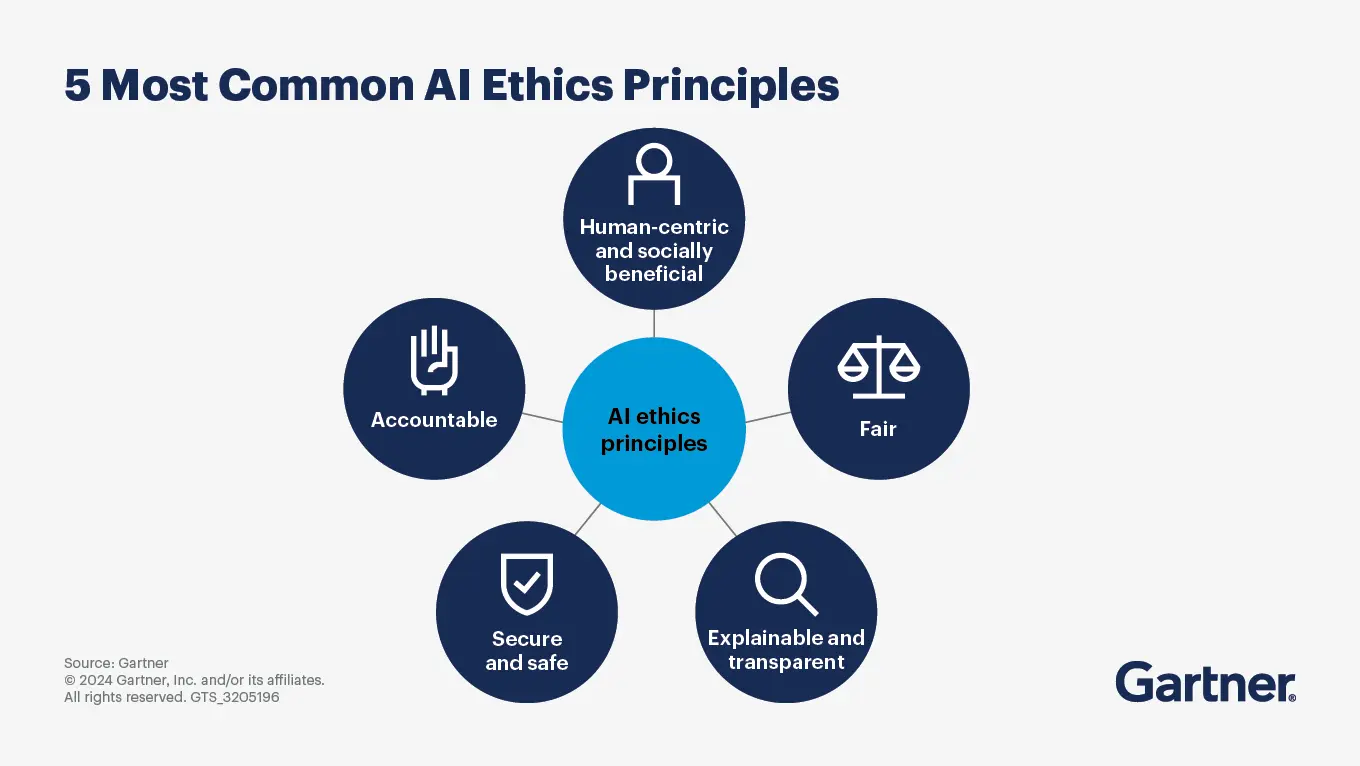In sectors like customer service, healthcare, and insurance, information can easily pile up like a cluttered desk. There are typically many messages to read, various updates to track, and complex decisions to make. That’s why many teams are adopting AI tools that cut through the clutter and guide them on what to do next to stay focused and productive.
Take a customer support team, for example. Some customer questions are simple and easy to resolve quickly, while others require more attention. An AI agent can be used to analyze incoming messages, suggest possible replies, and flag unusual issues. That way, human agents can respond faster and stay focused on the customer. The conversation stays human, but the process becomes more efficient.
This idea of AI innovations working alongside people is known as Augmented AI. It doesn’t replace human judgment – it supports it. AI tools help spot patterns, suggest next steps, and organize information in real-time. People still make the final call, but the path to that decision becomes faster, clearer, and more focused.
In this article, we’ll look at how Augmented AI fits into real-world business settings and why it’s quickly becoming a key part of how work gets done. Let’s get started!
Augmented AI refers to AI systems designed to work alongside people, helping them make better decisions. These systems analyze data, pull in relevant information, and suggest next steps based on the situation. The goal is to improve clarity and accuracy – while keeping humans in control of the outcome.
Traditional AI tools usually run behind the scenes and only output results once a task is completed. Augmented AI takes a different approach. It stays involved throughout the process and responds in real-time as the user works.

AI Augmentation Brings Humans and Machines Together
Many business tools already use this approach. For instance, a writing platform might recommend edits as a user drafts a document. Similarly, a customer support system can suggest replies based on past conversations. In both cases, the human user stays in control of the task while the system offers assistance that reduces effort and sharpens focus.
This setup follows a human-in-the-loop approach, where the AI system processes large volumes of data and identifies key patterns or anomalies. Humans stay actively involved, reviewing the AI’s input and applying their own context and judgment to make the final decision.
Not every decision is about speed. Some require thoughtful judgment, a clear understanding of context, and careful oversight. This is crucial in fields like healthcare, finance, and law, where a single decision can impact lives, money, or safety. In these areas, people are still responsible for the final outcome, but AI solutions can provide timely input that makes decisions more precise and reliable.
As more businesses look for more innovative ways to handle complex situations, demand for these types of AI solutions is growing. Studies show that the global augmented intelligence market was valued at $29.15 million in 2023 and is expected to grow by more than 25% each year through 2030.
A number of popular tools already use Augmented AI. For example, GitHub Copilot supports developers by suggesting code based on what they’re working on. Similarly, Microsoft 365 Copilot assists with everyday tasks like writing emails, organizing meeting notes, and creating real-time summaries.
These tools show how AI can fit into everyday tasks without completely taking over tasks. As Satya Nadella, CEO of Microsoft, puts it: “AI is the defining technology of our times. It’s augmenting human ingenuity and helping us solve some of the world’s most pressing challenges.”
He also pointed out, “I’d say maybe 20%, 30% of the code that is inside of our repos today, and some of our projects are probably all written by software.”
Here are a few ways AI augmentation adds value to human workflows:

5 Key Benefits of AI Augmentation
Adaptive AI can be compared with a teacher who watches how each student responds and then adjusts the lesson to fit. Some learners need repetition. Others move faster with examples.
In a similar way, adaptive AI doesn’t follow one fixed pattern. It changes based on the results it sees. Each time it is used, it collects feedback and learns from the outcome. Over time, it becomes more useful because it responds to the situation instead of repeating the same rule.

Static ML Vs. Adaptive ML (Source)
This makes it valuable in fields where every case is different. For example, in healthcare, adaptive AI can analyze patient data and suggest treatments based on history and symptoms.
Similarly, in customer support, AI chatbots learn from each interaction to improve response quality over time.
Education is another space where this approach works well. Duolingo, for instance, uses an adaptive model called BirdBrain that adjusts the difficulty of lessons based on how well a person is doing. If someone struggles, the next question gets simpler. If they move quickly, the tool raises the level.
The AI models used in these use cases need exposure to a wide range of data for adaptive AI to work effectively. If they see only one input type, such as feedback from a single user group or environment, they can’t adjust accurately or perform fairly across different scenarios. That is why a broad mix of clear, labeled data is vital.
AI collaboration between people and machines takes different forms depending on the task being worked on. In some cases, people stay closely involved, reviewing results before action is taken. In other cases, AI systems handle routine work while people step in only when something needs attention.
The first model is referred to as Human-on-the-Loop. AI is used to handle routine tasks, and humans step in only when needed. This is often used in customer service, where AI chatbots manage common questions and route the harder ones to humans.
The second method is Human-in-the-Loop, where people step in at specific points to review results, verify outputs, or make changes before action is taken. This setup is used in areas like fraud detection and content moderation, where AI provides suggestions, but a human confirms the final decision or action.
Some tasks can be handled either as human-in-the-loop or human-on-the-loop, depending on the situation and level of risk. For example, in fraud detection, routine cases can be handled automatically, while more complex or uncertain ones may require a human to review and decide.

Comparing Models of Human Involvement in AI Augmentation
Another example of Human-in-the-Loop innovation is the collaboration between IBM and Scuderia Ferrari in Formula 1 racing. During each race, augmented AI analyzes live data like weather, tire conditions, and competitor strategy. It quickly turns this information into insights that help human analysts make real-time decisions.

AI helps Ferrari analyze live race data and improve team performance. (Source)
As artificial intelligence becomes more involved in how decisions are made, the need for ethical oversight grows. AI models are now used in systems that guide healthcare choices, financial reviews, and customer responses. To keep these systems reliable, every stage of development needs careful focus, from collecting quality data to testing outputs in real-world conditions.
One way to manage this is through structured AI governance. Clear documentation helps teams keep track of how a model was built, what data it learned from, and how often it is checked. This makes it easier to spot problems early and stay on track with business or legal requirements without slowing things down.

Five Most Common AI Ethics Principles (Source)
Bias is a core issue that governance aims to address. When a model learns from only a narrow set of examples, its decisions may leave out important contexts. Reviewing where the data came from, how it was selected, and what updates were made makes it possible for teams to make fairer systems that serve a wider range of users.
Companies like OpenAI, Meta AI, and Anthropic are now building internal controls into their models to guide behavior at each step. At Objectways, we share that goal by creating clean, traceable datasets that are easy to review and designed to support systems that are fair, transparent, and accountable.
Despite all the benefits that augmented AI offers, there are still some challenges. Here are a few things teams should keep in mind when bringing these tools into everyday workflows:
Augmented AI provides a clear way to apply intelligence to everyday tasks while keeping human judgment in the loop. It supports tasks that rely on careful thought, experience, and real-time context. To make this possible, these systems need thoughtful designs, quality data, and oversight from those who work with them. When all three are in place, the results become more reliable and easier to explain.
The goal is to improve how we focus, solve problems, and make choices. As Sundar Pichai said, “The future of AI is not about replacing humans; it’s about augmenting human capabilities.” For companies aiming to leverage AI in the long run, today’s AI trends are focused on trust, clarity, and responsible systems.
Objectways supports this by delivering high-quality data and human-in-the-loop workflows. With secure handling and expertise in AI and deep learning, we help build AI innovations that put people first and adapt to real-world needs.
Looking to build or improve your AI workflows? Reach out to us, and let’s redefine the future of AI together!
